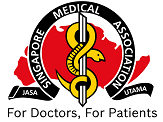Singh D, Teo SG, Omar AR, Poh KK
Correspondence: A/Prof Poh Kian Keong, kian_keong_poh@nuhs.edu.sg
ABSTRACT
We discuss two cases of incessant atrial tachycardia (AT), including the presentation and clinical course. It is important to differentiate AT from other causes of supraventricular tachycardia, such as atrioventricular nodal reentrant tachycardia (AVNRT) and atrioventricular reentrant tachycardia (AVRT), as it would have implications on clinical management. Electrocardiographic features of AT, especially the presence of an AV Wenckebach phenomenon with ‘grouped beating’, are critical for differentiating AT from AVRT and AVNRT. It is also vital to identify the P waves and their relations to QRS on electrocardiography, as this would aid in the differentiation of various supraventricular tachycardias.
Keywords: atrial tachycardia, atrioventricular Wenckebach phenomenon, palpitations, regular narrow complex tachycardia
Singapore Med J 2014; 55(9): 451-455; http://dx.doi.org/10.11622/smedj.2014112
REFERENCES
| 1. Saoudi N, Cosío F, Waldo A, et al. A classification of atrial flutter and regular atrial tachycardia according to electrophysiological mechanisms and anatomical bases; a Statement from a Joint Expert Group from The Working Group of Arrhythmias of the European Society of Cardiology and the North American Society of Pacing and Electrophysiology. Eur Heart J 2001; 22:1162-82. http://dx.doi.org/10.1053/euhj.2001.2658 | ||||
| 2. Singh D, Teo SG, Poh KK. Electrocardiography Series. Regular narrow complex tachycardia. Singapore Medical J 2011; 52:146-9; quiz 450. | ||||
| 3. Blomström-Lundqvist, C, Scheinman, MM, Aliot, EM, et al. ACC/AHA/ESC guidelines for the management of patients with supraventricular arrhythmias–executive summary: a report of the American College of Cardiology/American Heart Association Task Force on Practice Guidelines and the European Society of Cardiology Committee for Practice Guidelines (Writing Committee to Develop Guidelines for the Management of Patients With Supraventricular Arrhythmias). Circulation 2003; 108:1871-909. http://dx.doi.org/10.1161/01.CIR.0000091380.04100.84 | ||||
| 4. Medi C, Kalman JM, Haqqani H, et al. Tachycardia-mediated cardiomyopathy secondary to focal atrial tachycardia: long-term outcome after catheter ablation. J Am Coll Cardiol 2009; 53:1791-7. http://dx.doi.org/10.1016/j.jacc.2009.02.014 | ||||
| 5. Chen SA, Chiang CE, Yang CJ, et al. Sustained atrial tachycardia in adult patients. Electrophysiological characteristics, pharmacological response, possible mechanisms, and effects of radiofrequency ablation. Circulation 1994; 90:1262-78. http://dx.doi.org/10.1161/01.CIR.90.3.1262 PMid:8087935 | ||||
| 6. Kistler PM, Roberts-Thomson KC, Haqqani HM, et al. P-wave morphology in focal atrial tachycardia: development of an algorithm to predict the anatomic site of origin. J Am Coll Cardiol 2006; 48:1010-7 http://dx.doi.org/10.1016/j.jacc.2006.03.058 | ||||
| 7. Akhtar M. Supraventricular tachycardias. Electrophysiologic mechanisms, diagnosis and pharmacologic therapy. In: Josephson ME, Wellens H, eds. Tachycardias: Mechanisms, Diagnosis, Treatment. Philadelphia: Lea & Febiger, 1984: 137-69. | ||||


